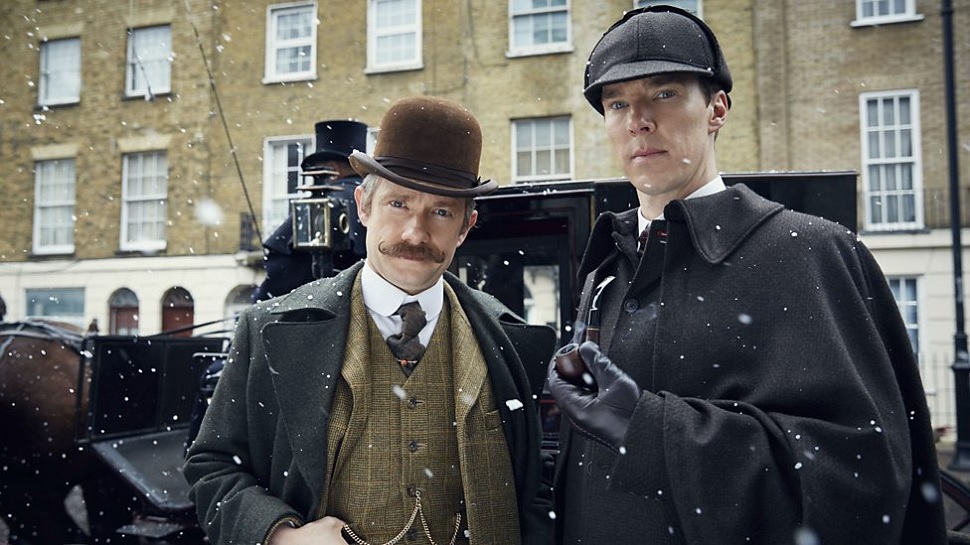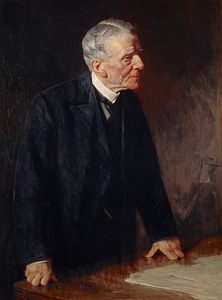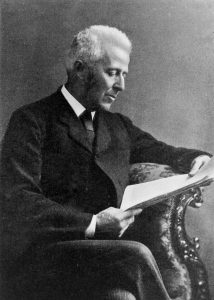
PHOTO: nerdist
In 1891, a legacy to rival all crime fiction to date began. Sir Arthur Conan Doyle published his “A Scandal in Bohemia”, in The Strand Magazine. Doyle kept writing and captivating audiences with the famous consulting detective up until 1927, totaling four books and 56 short stories. Sherlock Holmes is, arguably the most iconic and most well-known fictional detective in history. But how did it happen? When did it start? What led the author to create such a clever crime-solving detective? Well, there were two historical figures cited as inspiration for Doyle’s Holmes: Joseph Bell, and Sir Henry Littlejohn.
Sir Joseph Bell
Sir Joseph Bell was a Scottish University lecturer at University of Edinburgh in the 19th century. He was a man all about the details, emphasizing the importance of careful observation. The story goes that he would pick a stranger and just by looking at the man, he could deduce from such things as the way he carried himself, his clothes, his articles and speech patterns the man’s occupation and what he’d just been doing. He’s considered one of the early pioneers in forensic pathology long before science was used in criminal investigations.
He received his MD in 1959, served as personal surgeon to Queen Victoria, and published several medical textbooks. Beyond that, he was a Justice of the Peace and a Deputy Lieutenant. This guy really got around.
Arthur Conan Doyle met our friend in 1877, when the famous writer served as his clerk, of all things, at Edinburgh Royal Infirmary. Doyle stated many times that he based Sherlock on Bell and his art of forensic pathology. His fabrication of the character wasn’t entirely fiction. Bell took part in several police investigations, mostly in Scotland, working with the forensic exert Professor Henry Littlejohn, who also had a hand in the inspiration for Doyle’s Sherlock Holmes.
Joseph Bell died on October 4th, 1911. He was buried at the Dean Cemetery in Edinburgh alongside his wife and his son, and next to his father and brother’s graves.
Sir Henry Duncan Littlejohn

PHOTO: nationalgalleries.com
Sir Henry Duncan Littlejohn was a Scottish surgeon, forensic scientist, and public health pioneer. He was born in 1826. He studied at Perth Academy and the Royal High School, and continued his academics at the University of Edinburgh, studying medicine and graduating with distinction in 1847.
He served as Edinburgh’s Police Surgeon in 1854, and often worked with Joseph Bell on several investigations. While the latter was often credited by Sir Arthur Conan Doyle as inspiration for his character, Sherlock, the author also stated that Sir Henry Duncan Littlejohn influenced his work. His knowledge of forensic medicine was indispensable on several cases, and Sir Henry was the one that taught Arthur Conan Doyle everything he knew about forensic medicine when Doyle was studying at the medical school of the University of Edinburgh.
Littlejohn was knighted in 1895 by Queen Victoria. He died at Benreoch, near Arrochar in Argyll in 1914, and was buried at the Dean Cemetery in Edinburgh, just like Joseph Bell.
Sherlock Holmes is listed as the most portrayed movie character in history, according to the Guinness World Records. The legacy of the fictional detective is undeniable. There have been hundreds of adaptions of Sir Arthur Conan Doyle’s character across stage and radio plays, television, films, video games, and other media for over one hundred years. Doyle’s stories and characters have had a lasting and profound effect on mystery writing. Thousands of authors have taken notes from Doyle’s style of writing, and hundreds of characters have used Sherlock’s art of deduction to solve fictional crime. But Sherlock Holmes never would have deduced his way through the pages of Doyle’s books were it not for the brilliance of Sir Joseph Bell and Sir Henry Duncan Littlejohn, proving that fiction most always imitates life.


